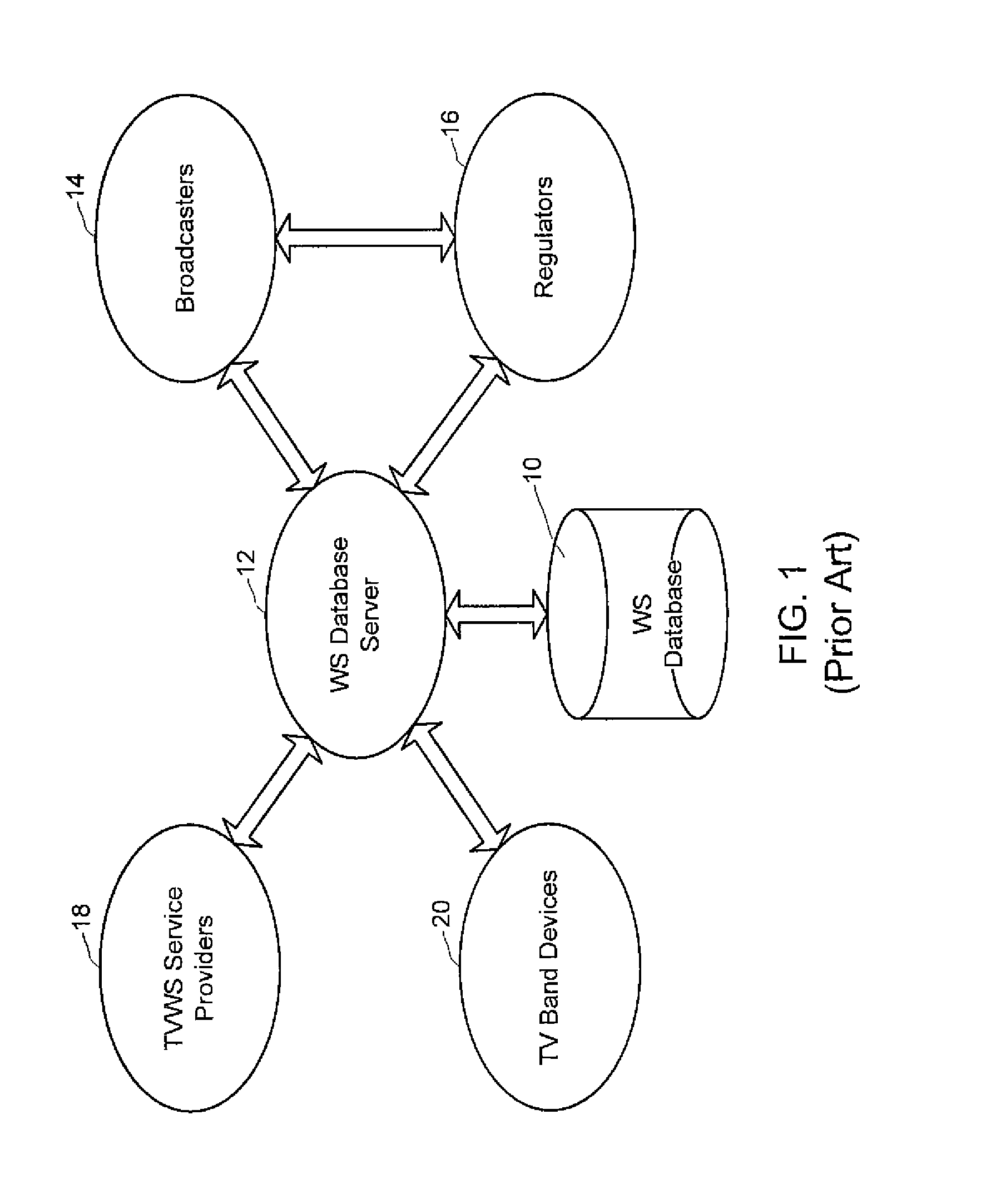Peer-to-peer control network for a wireless radio access network
a wireless radio access network and control network technology, applied in the field of vacant tv channel use, can solve the problems of low-cost front-end components, difficult to meet broadcasters' real requirements, and difficult to implement sensors/detector hardware implementation,
- Summary
- Abstract
- Description
- Claims
- Application Information
AI Technical Summary
Benefits of technology
Problems solved by technology
Method used
Image
Examples
Embodiment Construction
[0030]The invention provides a peer-to-peer control network for a wireless radio access network (WRAN), in which peer spectrum managers serve as base station controllers to manage white space spectrum usage in the WRAN. The peer-to-peer relationship between the spectrum managers depends on the type of network in which the peer-to-peer control network is deployed. In the case of 802.22 type networks, the peer-to-peer relationship is structured. For an 802.11 (WiFi) type network, the P2P relationship depends on the network topology. For an Extended Service Set (ESS) used by enterprises, it is structured. For both Basic Service Set (BSS) and Independent BSS topologies used in small office / home office (SOHO) or home environments, it is unstructured. After reading this description, it will become apparent to one skilled in the art how to implement the invention in various alternative embodiments and alternative applications. Although various embodiments of the present invention are descr...
PUM
 Login to View More
Login to View More Abstract
Description
Claims
Application Information
 Login to View More
Login to View More - R&D
- Intellectual Property
- Life Sciences
- Materials
- Tech Scout
- Unparalleled Data Quality
- Higher Quality Content
- 60% Fewer Hallucinations
Browse by: Latest US Patents, China's latest patents, Technical Efficacy Thesaurus, Application Domain, Technology Topic, Popular Technical Reports.
© 2025 PatSnap. All rights reserved.Legal|Privacy policy|Modern Slavery Act Transparency Statement|Sitemap|About US| Contact US: help@patsnap.com



